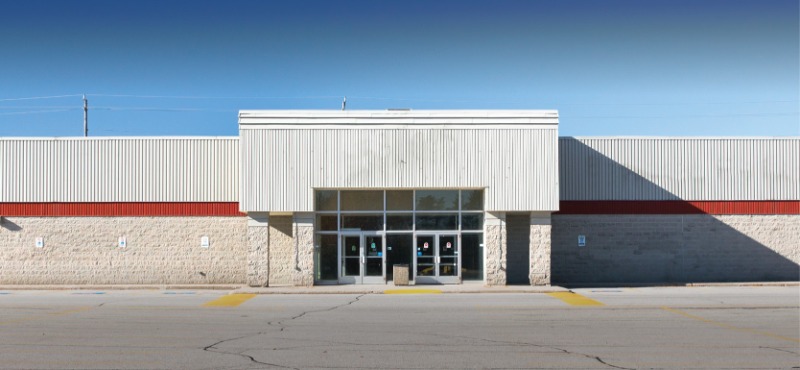When Toys “R” Us filed for Chapter 11 in September, it became the second largest retailer ever to seek bankruptcy protection as measured by assets at the time of filing.
The big box toy store joined an exclusive club that nobody wants to be part of: companies in need of a financial do-over to address declining sales, suffocating debt, and overwhelming uncertainty about the future.
Business bankruptcies overall have dropped steadily since the height of the recession in 2009. But that hasn’t been the case for retailers and other businesses being disrupted by the digital economy or undone by overbuilding and heavy borrowing.
Retailers have had it particularly bad. E-commerce sales were expected to grow four times as fast as sales at traditional brick-and-mortar stores in 2017, to about $2.3 trillion globally. While e-commerce still accounts for only 10.1 percent of global retail purchases, that market share is expected to climb to 16 percent by 2021, according to eMarketer.
Online competition isn’t retail’s only problem. The industry is grappling with the results of chronic overbuilding, poor merchandising, and leveraged buyouts that left some stores drowning in debt.1 Through the first nine months of 2017, the latest period for which data is available, retailers accounted for approximately 16 percent of all U.S. business bankruptcies, compared to 12.7 percent in 2016 and 11 percent in 2015, according to bankruptcy analyst New Generation Research Inc.2 More than 300 retailers closed in 2017, most of them small stores but this also included name brands like Toy “R” Us, Gymboree, Payless ShoeSource, and Radio Shack.
Experts expect the same level of bankruptcies in 2018—or more, should interest rates rise and make credit even harder to come by. “If they go up, there will be an increase in bankruptcy filings and liquidations,” says Matthew Beatman, a bankruptcy lawyer and partner at Zeisler & Zeisler PC in Bridgeport, Connecticut.
Business Bankruptcies Dropped 5.4 Percent through Q3 in 2017
Total business bankruptcies declined 5.4 percent through the first nine months of the year, to 17,371, compared to 18,361 in the same period in 2016, according to the American Bankruptcy Institute. Statistics include Chapter 7 liquidations and Chapter 11 reorganizations.
High-profile retailers aside, small companies accounted for the vast majority of 2017 business bankruptcies, with enterprises with less than $5 million in annual sales representing 83 percent of filings in the first nine months the year, according to New Generation Research.
Public company bankruptcies dropped through the first three quarters of 2017 to 54 with combined assets of $70.4 billion from 77 with combined assets of $92 billion during the same time in 2016. The energy industry recovered somewhat from 2016, when plunging oil prices saw 17 oil, gas, or other energy suppliers seek bankruptcy protection, representing 41 percent of all public company filings3 that year. Given the capital intensive process of gas production and volatility of commodities, some companies are still working on their balance sheets, which could lead more to reorganize, Beatman says. “I don’t think it’s over, but it’s more stable now.”
Low interest rates have kept credit relatively cheap, at least for small- and mid-sized companies, which could help explain the continued decline in filings. It’s also become more common for private equity companies, investors, and lenders to seek faster, cheaper alternatives to bankruptcy. Those options include closing a business, putting it into receivership, or assigning assets for the benefit of creditors. In some states, a business can assign assets to an attorney or other individual to liquidate and distribute to creditors, Beatman says.
High filing costs are also an obstacle for some businesses considering bankruptcy, a situation ABI hoped to fix through a slate of Chapter 11 reforms first proposed in 2015 that to-date have failed to raise support in Congress.
Experts predict business bankruptcies to remain relatively flat heading into 2018. That said, rising interest rates and low-quality corporate debt could lead to an increase in public company filings, according to New Generation Research.
With the White House and Congress preoccupied with changes to the tax code, health care, immigration, and trade, neither is likely to be inclined to revisit existing bankruptcy regulations.
President Trump’s repeated use of bankruptcies in his real estate and casino businesses over the years might make him hesitate to put more provisions on bankruptcy codes. Various Trump companies filed for bankruptcy protection four times between 1991 and 2009.
“While the creditor lobby might push for more, I don’t know that there are going to be any significant changes,” Beatman says.
Though bankruptcies are generally viewed as bad for business—after all, in most cases suppliers, creditors, and investors don’t end up with all the money they’re owed—they can have silver linings for business owners. Reorganizing can help a business after changing or unforeseen circumstances by selling assets, undoing leases on excessive square footage, or renegotiating unprofitable contracts. In some cases, they can be used to convert debts owed to creditors into equity. “It can have some value,” Beatman says.






















